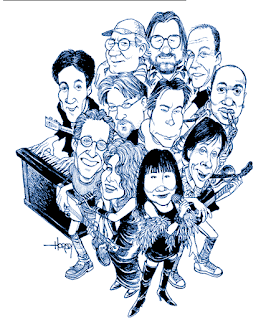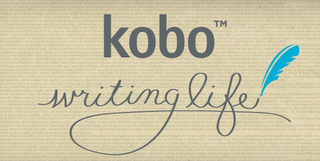From Mashable Business:
[S]elf-publishing means you won’t get all of the resources that a publishing company might provide, and you’ll have to pull a lot of the weight yourself. Here are some things you should consider before embarking on your journey to publication.
- 5 things to consider before publishing your book
I agree! This is the kind of article I wish I'd read before I published my first book.
1. Publishing Platform
The number of publishing platforms is increasing. Just last week, Kobo announced the creation of a self publishing portal called
Writing Life. Here are a few more:
Ebooks:
-
Amazon KDP
-
Barnes & Noble PubIt
-
Smashwords
-
Kobo Writing Life (in beta at the moment)
Print On Demand:
-
CreateSpace
-
Lulu
-
Lightning Source
The choices may seem bewildering. If you've never published a book before then I'd suggest you get your feet wet by publishing an ebook, forget about putting out a paper version for now. Perhaps you have a short story that you would like to offer for sale?
Now that we've established the format, what about the platform? It's up to you, of course, but if this is your first time I would suggest
publishing on Smashwords. In my opinion the only reason
not to publish on Smashwords is Amazon's KDP Select program and that is a topic for another time (see the Related Links section, at the end).
It's easy to publish your book on Smashwords IF you follow the advice Mark Coker gives in his
Smashwords Style Guide. I have found the
Smashwords Style Guide to be the single most helpful book for formatting (or un-formatting as the case may be) a .doc file so that the finished ebook is error free.
If you do decide to publish through Smashwords remember to download all the different formats (mobi, epub, etc.) your book has been converted into and check each one for formatting errors. For instance, a table of contents that looks wonderful in Amazon's mobi format might look terrible in the epub format.
It may take you a few tries, but it gets easier each time you publish. Also, the hints Mark Coker offers in
Publishing on Smashwords apply whether you are publishing on Smashwords or Amazon. And the book is free! I know this reads like a commercial for Coker's book, but it's not just me, many self-published authors have found his book invaluable.
2. Cost
While anyone can publish an ebook at no cost--other than your time which, arguably, is the most valuable thing of all--many people chose to contract various professionals to help them with tasks like editing, formatting, cover art, and so on. The money spent can add up, and quickly, so it's a good idea to sit down at the very beginning and decide how much of the work you're comfortable doing yourself.
The Cover
First impressions count--sometimes a glance is all anyone will give your book--so you don't want your book discounted because of a cover that screams "self-published".
You could hire someone to do the cover, and if you choose this option keep in mind you can expect covers can run anywhere from $100 to $350. Of course you could get a cover for less or more, but you should be able to get a decent cover in this price range.
If you decide to do it yourself, and I'm an advocate of at least trying this before you hire someone, there are some excellent image manipulation programs available for little to no cost.
GIMP (
GNU
Image
Manipulation
Program), for instance. Of course if you already have Photoshop on your computer, use that!
When I do my covers my goal is this: Don't make it ugly. I'm not a graphic designer so, for me, simple is better and I let the principle of "the absence of ugliness" be my guide. Good luck whichever way you decide to go.
Editing
Get someone else to edit your work before you publish it. Period. There is no way you will be able to catch the errors in your manuscript the way another, more objective, person can.
If you can't afford to pay an editor then get together with other self-publishers and help edit their work in exchange for someone else editing yours.
Goofy tip: Lately I've been running my blog posts and stories through a text-to-speech program,
NaturalReader. It's amazing how many errors it catches! I still need a human editor to go over my work, but the cleaner the copy your human editor gets, the better!
ISBN Numbers
While doubtless a worthy investment, if you're planning on publishing your book exclusively in electronic form and only through Amazon or Smashwords, you probably don't need to buy an ISBN number. Smashwords will provide one for free, if you ask, and Amazon will give you an ASIN number. (See 'Related Articles' for more on publishing through Amazon).
3. Marketing
For the self-published author nothing can replace building a platform. "Platform" is one of those abstract words which can mean almost anything. In my opinion, you'll need to set up a website, or at least a blog, and you'll need to blog regularly. This need not be onerous, even if you blog once a month you'll start to build an audience.
Google Analytics
Google Analytics is an invaluable tool, especially in the beginning when it looks as though no one is reading your blog. And it's free!
I'd been blogging for a few months before I set up my account with Google Analytics and it was a revelation. I remember jumping around the living room because a whole
5 people had come by my blog that day.
Twitter
I'd also advise setting up a twitter account. If you don't want to do Facebook that's fine, but I suspect you would be missing out on an opportunity. I know I should do more with Facebook, but I've found the interface to be mildly cantankerous--or perhaps that's just me.
Remember: Whatever you decide to do, keep writing!
Related Articles:
-
More on Amazon Select: Is exclusivity worth it?
-
Amazon's Ranking Algorithm Has Changed: what this means for indie authors
-
Changes in Amazon's Algorithm: An Update
Books on Publishing (Free):
-
Smashwords Style Guide, Mark Coker
-
Smashwords Book Marketing Guide
-
The Secrets to Ebook Publishing Success
"5 Points To Ponder Before You Self Publish," copyright© 2012 by Karen Woodward.




















